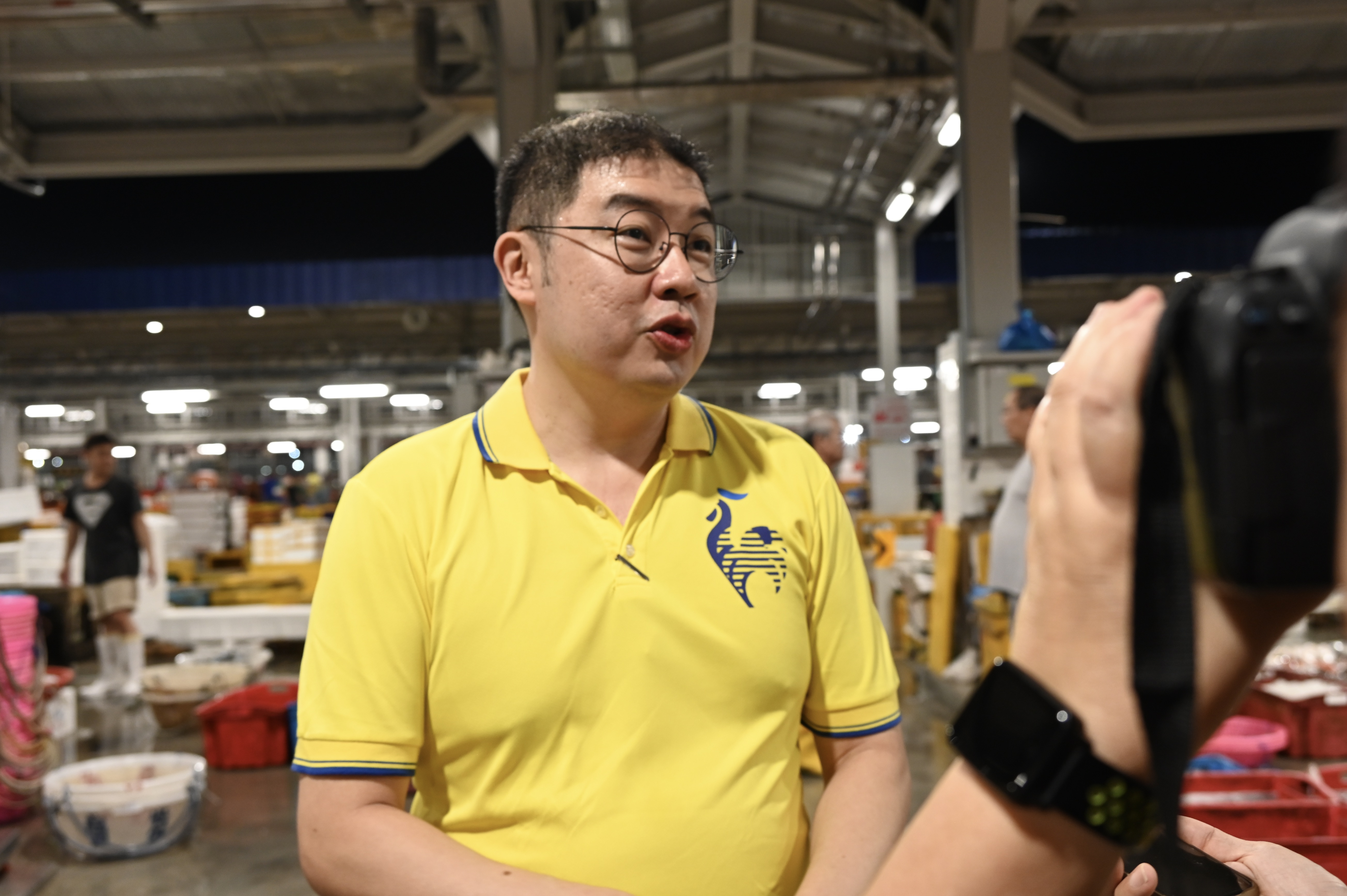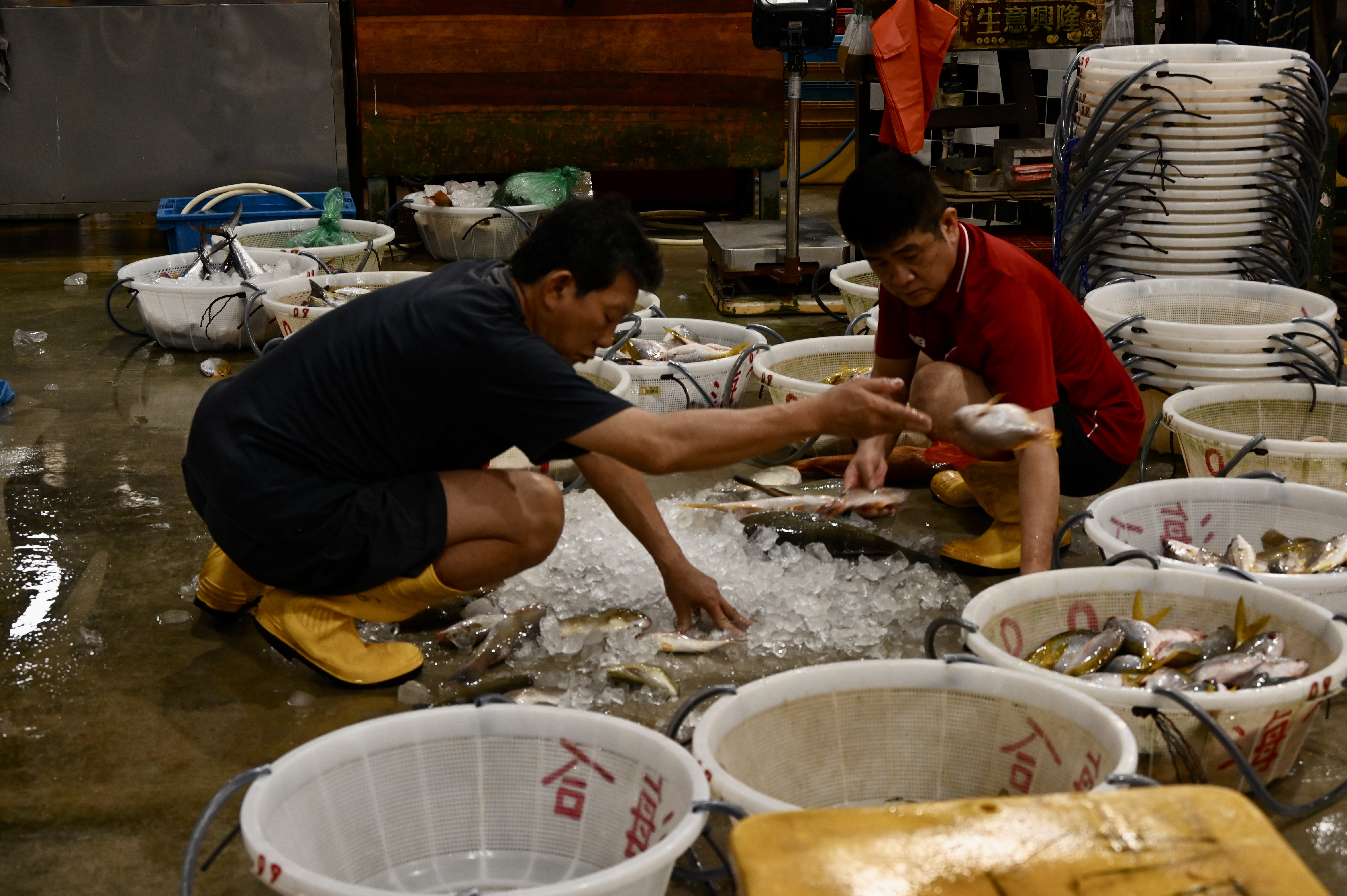Getting into a cab at midnight, my taxi driver asked why a young woman like myself was headed to Jurong Fishery Port at that hour.
"To buy fish, of course," I joked.
The Jurong Fishery Port (JFP) that I was visiting that morning had recently taken in seafood wholesalers from Senoko Fishery Port (SFP) and burgeoned to a 130-stall complex -- a move that the Singapore Food Agency (SFA) said "would allow trade buyers to purchase wholesale seafood conveniently at a single location".
 Photo by Ruth Chai.
Photo by Ruth Chai.
Closure of Senoko
Senoko Fishery Ports began operations in 1997 and was a home base for Singapore's local fishermen.
 Senoko Fishery Port. Photo by Andrew Koay.
Senoko Fishery Port. Photo by Andrew Koay.
The 3,326m² facility housed a wholesale fish market with 25 merchants and represented one of Singapore's major entry points for fresh seafood caught in local waters.
However, the volume of seafood handled at SFP started to decline from the year 2000.
In 2023, it represented approximately two per cent of Singapore's total seafood imports.
The declining activity at SFP, coupled with decreasing customer patronage, presented an opportunity for the consolidation of the two fishery ports.
 Senoko Fishery Port. Photo by Andrew Koay.
Senoko Fishery Port. Photo by Andrew Koay.
Relocation to Jurong
JFP started operations in 1969 and serves as a docking and bunkering base for local and foreign fishing vessels.
 Photo by Ruth Chai.
Photo by Ruth Chai.
It is also a marketing and distributing centre for fresh fish.
In 2023, JFP handled 15 per cent of Singapore's seafood imports.
By consolidating both ports, SFA hopes to increase the vibrancy of trade by providing more opportunities for merchants and expanding their customer base.
 Photo by Ruth Chai.
Photo by Ruth Chai.
Additional market lots were added to cater to 21 relocated merchants from SFP, and renovation and repair works were also completed to refresh and improve the infrastructure.
In total, there are 130 market lots in JFP currently.
More competition
As the rest of the island slept, business had just begun for the fish merchants.
Daniel Pe, 44, Chairman of the Punggol Fish Merchants Association, opined that there's a lot to get used to in the new space.
 Daniel Pe. Photo by Ruth Chai.
Daniel Pe. Photo by Ruth Chai.
"Everything's very new, and we're still trying to adjust to the momentum and get more customers," he said.
Inheriting the business from his father, he worked at Senoko for about 20 years before coming to Jurong Fishery Port.
 Photo by Ruth Chai.
Photo by Ruth Chai.
Most of Pe's fish come from places such as Malaysia and Thailand.
Trawlers would head out to sea from anywhere between three days and two weeks. When they arrive back at port, the fish are shipped to Singapore within 24 hours.
Half of Pe's fish are sold to fishmongers, while the other half are sold to restaurants.
 Daniel Pe. Photo by Ruth Chai.
Daniel Pe. Photo by Ruth Chai.
Although the consolidation would lead to more competition among fish merchants, Pe said that it's an encouraging sign for the industry.
Despite only operating there for a week, he described JFP as "more lively" compared to SFP.
"Business will need to diversify clientele to compete with the competition," he added.
 Photo by Ruth Chai.
Photo by Ruth Chai.
Better business
Chen You Ming, 64, who owns San Wang Fishery, expects the merger to bring in more crowds.
Business has been better for him ever since he moved from SPF, where he worked for around 50 years, he said.
He gets most of his fish from Indonesia and Malaysia, and sells them to various wet markets around the country.
 Chen You Ming. Photo by Ruth Chai.
Chen You Ming. Photo by Ruth Chai.
Chen started helping his father sell fish after completing his primary school education.
He said that the industry hasn't change much since when he was 12.
"I'm happy, I wouldn't be doing this if I wasn't," he said in Mandarin.

"Never a sunset industry"
 Photo by Ruth Chai.
Photo by Ruth Chai.
When asked whether such fishing ports would exist in the future, the answer was a resounding yes.
"Every country must have a fish market," Sim Kee Hua, 43, of High Tide Frozen Food Pte Ltd said.
Optimistic that the demand for fish will grow, Sim added that many people opt for fish nowadays as it is cheap, nutritious, and easy to cook.
Pe hopes that the consolidation will bring a renewed interest in fisheries amongst a young audience, and hopes that the industry will continue to get more young blood.
"It's never a sunset industry," Pe said.
 Photo by Ruth Chai.
Photo by Ruth Chai.
Related stories
Top photo via Ruth Chai

If you like what you read, follow us on Facebook, Instagram, Twitter and Telegram to get the latest updates.



